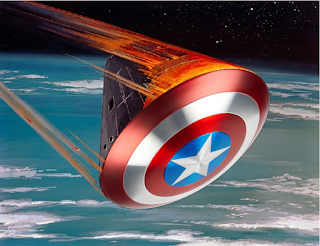TL;DR
- Flight of the space unicorns
- It's not vibranium, but it's the best we've got!
- Another pioneering little space probe
Current events
As an investment banker, I find space finance one of my favorite fields of space exploration (and unlike astrophysics, one which I can hopefully speak to with a bit more credibility!). This recent TechCrunch article discusses skyrocketing venture investment and valuations in space tech. Everyone knows SpaceX, but more and more space unicorns (highly valued private companies) are popping up - the article specifically mentions OneWeb, a satellite company that just announced a massive $1.25bn venture funding round
The boom has been heavily fueled by improved satellite launch economics. Launching satellites used to cost hundreds of millions of dollars, but with the advent of smaller CubeSats and reusable rockets, this has gone done by a factor of almost 1,000x in some cases!
Notably, none of the NewSpace companies have realized an exit and gone public, not even SpaceX. It'd be tough to reach Mars with public investors to appease every quarter!
 |
| Image credit: CBInsights |
The boom has been heavily fueled by improved satellite launch economics. Launching satellites used to cost hundreds of millions of dollars, but with the advent of smaller CubeSats and reusable rockets, this has gone done by a factor of almost 1,000x in some cases!
 |
| A CubeSat can fit in the palm of your hand! |
Notably, none of the NewSpace companies have realized an exit and gone public, not even SpaceX. It'd be tough to reach Mars with public investors to appease every quarter!
Today I learned
The most dangerous part of any spaceflight is atmospheric entry - the incoming spacecraft depends on friction from the atmosphere to slow down, but the immense heat generated as a result (around 3,000 $^\circ$F) would destroy the spacecraft were it not for a heat shield
In researching this topic, I myself learned something new! There are two classes of thermal protection systems: ablative and thermal soak
- Thermal soak: early missiles used titanium to capture and emit heat, but it was too heavy for spaceflight and abandoned. The Space Shuttle used more modern thermal tiles made mostly of silica (same stuff in glass, cool video here). These worked well for the most part, but were very brittle. A damaged tile destroyed Columbia in 2003, killing 7 astronauts
- Ablative: Instead of capturing and dissipating heat, ablative shields redirect heat energy into chemical reactions - they're ceramic coatings that are literally designed to melt as the spacecraft reenters. Unfortunately, this means the heat shield must be heavily refurbished for the spacecraft to fly again. The old Apollo capsules used this technology, and new manned capsules presently under development will as well
 |
| Space Shuttle's thermal soak heat shield (left) and the Apollo Command Module's ablative heat shield (right) |
Sadly neither is perfect, but absent Captain America's indestructible vibranium shield, that's the best we've got
 |
| If only it were this easy!!!! |
This week in space history
If you recall from my 3/2/2019 post, Pioneer 10 was the first probe to visit Jupiter. On April 6, 1973, its sister probe Pioneer 11 was launched and became the first probe to reach Saturn (after a nifty little gravity assist from Jupiter)
 |
| Photos of Jupiter (1974) and Saturn (1979) imaged by Pioneer 11 |
The scientists knew the two Pioneer probes would be the first ever with enough velocity to escape the Solar System, so the Pioneer plaques were attached on board, depicting a male and female human and a diagram of our Solar System in case aliens ever found them one day





No comments